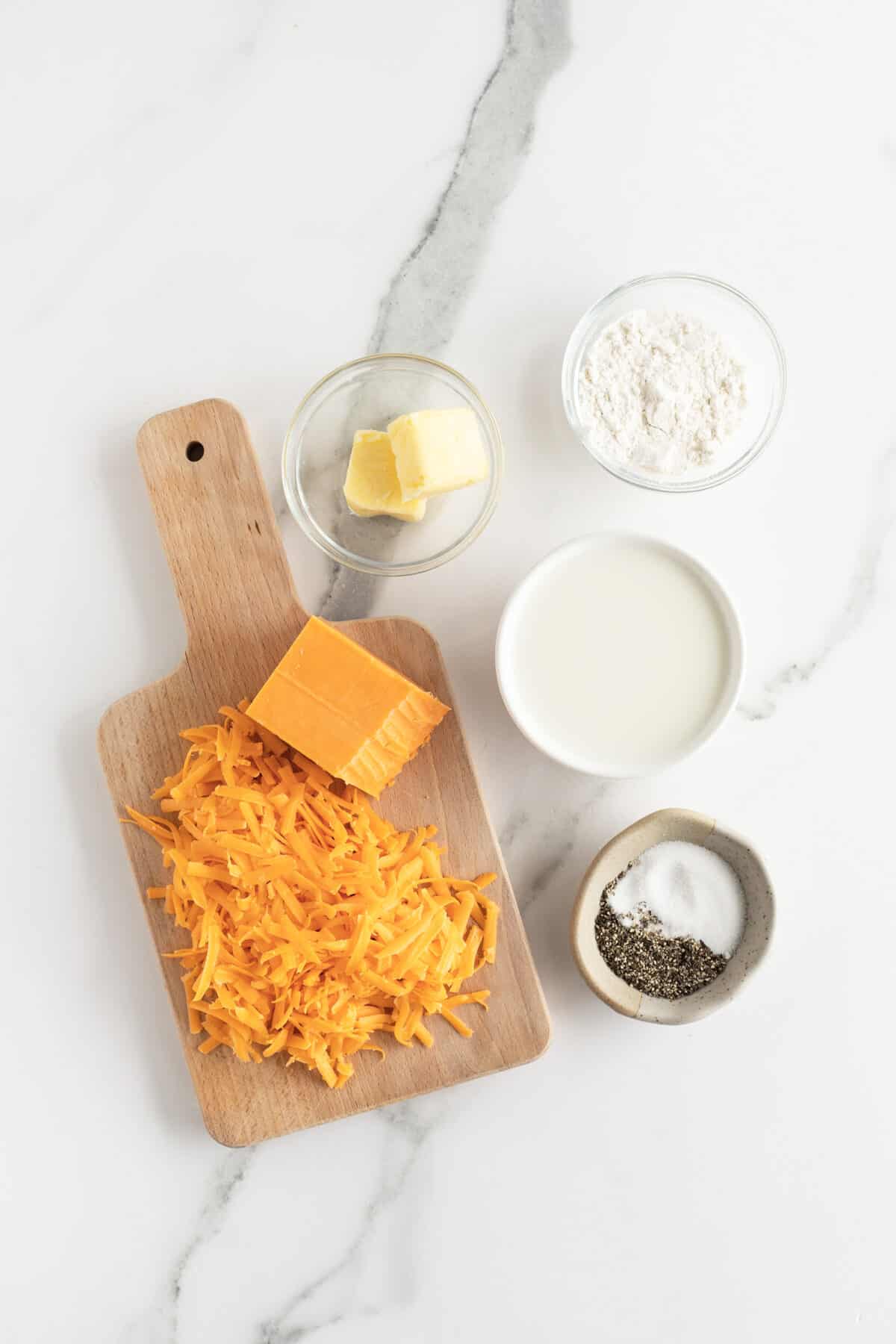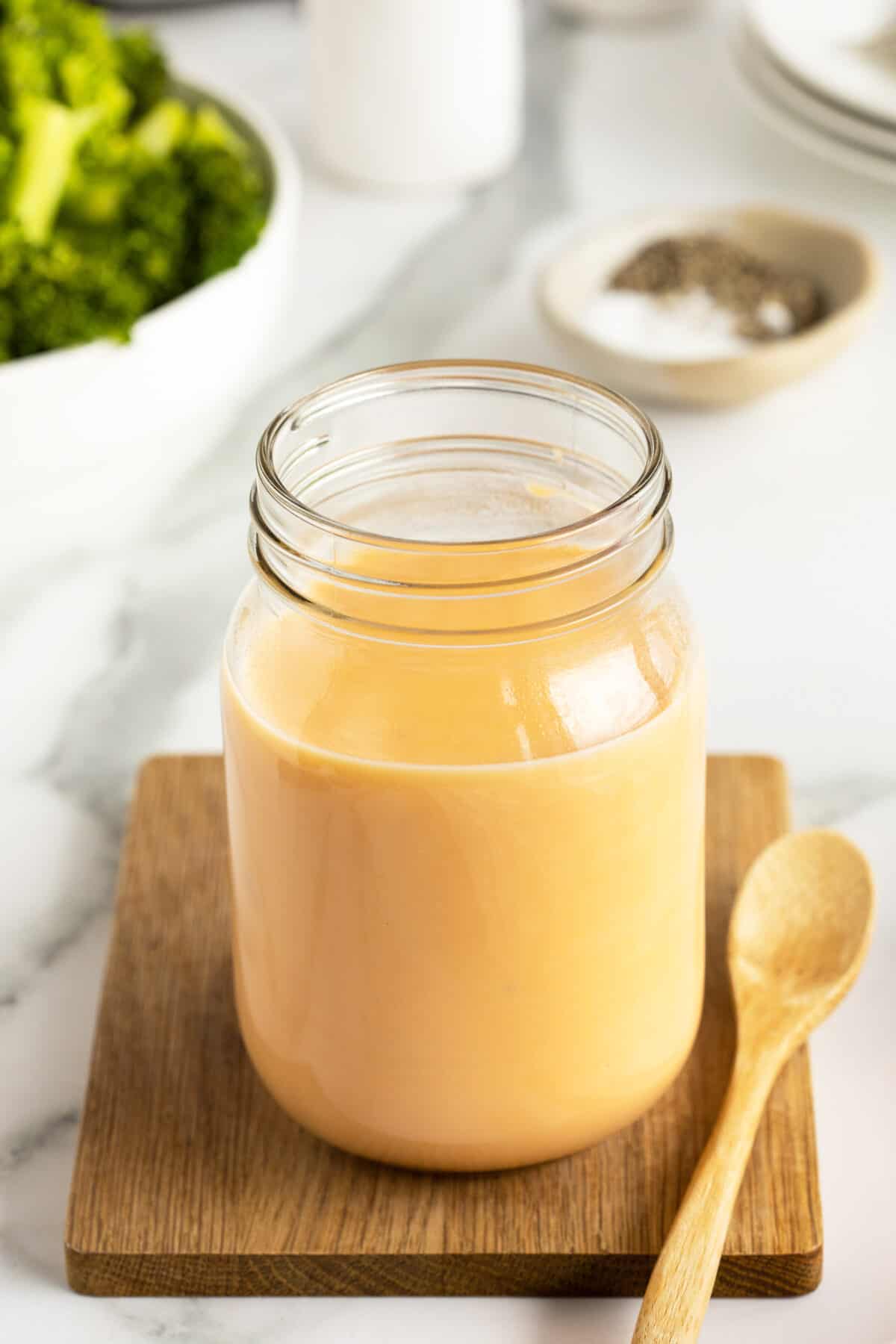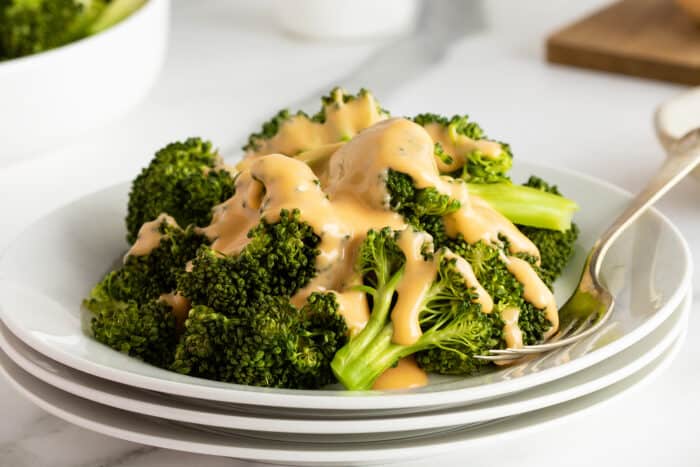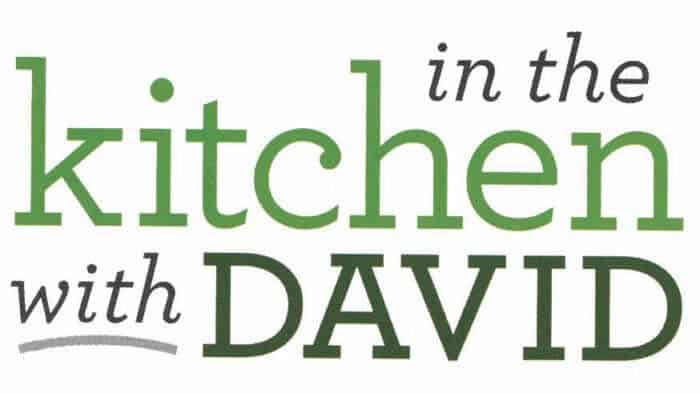Everyone needs to have a good quality, dependable cheese sauce recipe to fall back on. This cheese sauce is great on your favorite roasted vegetables like broccoli, cauliflower, or asparagus, and can be used on almost anything!
Make sure to try your cheese sauce over some Roasted Broccoli! Or cheesy Roasted Green Beans for a delicious side!

Cheese Sauce
Cheese sauce is one of the most versatile and indulgent additions to all kinds of different dishes.
Not only is it creamy and cheesy, but its rich fattiness is capable of elevating almost any flavor in any dish with its base deliciousness.
Whether you’re drizzling it over vegetables, using it as a dip, or incorporating it into other recipes, mastering the art of making cheese sauce can take your culinary creations to the next level.
After all, whoever heard of anything savory that didn’t go well with cheese?

Why It Is Important To Add The Milk Slowly
One crucial tip for making a smooth cheese sauce that anyone making it needs to know straight away is to add the milk slowly to the roux.
Adding the milk slowly, bit by bit, isn’t just useful to help ensure you don’t accidentally spill milk all over your stove top and scorch it, but it also ensures you end up with a lump-free sauce.
If you tried adding the milk all at once, you would likely end up with nothing more than a bunch of thick bits of congealed flour at the bottom of the pan, covered by thin milk.
Adding the milk bit by bit ensures that each of the little clumps of roux has the chance to fully hydrate and accept the milk, helping to create the proper velvety texture and preventing the sauce from becoming too thin or thick.
Just remember; patience is key when incorporating the milk, so take your time and whisk consistently until each addition is fully blended.

Could You Use Other Types Of Cheese?
This recipe uses some pretty standard Cheddar cheese, which gives a rich, comforting, familiar flavor to your cheese sauce.
However, there is nothing stopping you from playing around with a few other different types of cheese, or even a blend of cheeses if that’s what you want to do.
Other options like Gruyere, Swiss, Monterey Jack, or even a combination of all three, all make for interesting choices. Each cheese brings its unique characteristics, ranging from tangy to nutty or sharp.
Just keep in mind that melting properties may vary between cheeses, so it’s essential to choose ones that melt smoothly.
Feel free to get creative and try different cheese combinations to tailor the sauce to your preferences or the dish you’re preparing.
One surprising tip to keep in mind if you are struggling with getting your cheese sauce to come together smoothly is to use one of those little fake, plastic-like slices of cheese usually sold in thin, square packets.
While most people would hesitate to call these little squares cheese at all, what they do have is plenty of a helpful binding agent called sodium citrate.
Sodium citrate not only helps to thicken and enrich your sauce, but it stops it from breaking, preventing a bunch of leaking fat from oozing out of your sauce and ruining everything.
So just add a single slice of this imitation cheese when you add the rest of your cheese, and you should end up with a perfectly stable sauce!

How To Store Leftover Cheese Sauce
If you find yourself with leftover cheese sauce, it’s essential to store it properly to maintain its quality.
First, allow the sauce to cool completely before transferring it to an airtight container. If you tried placing the warm sauce in a sealed container, you might find you created a bunch of condensation on the lid of your container, which could affect its texture and taste.
Store the container in the refrigerator, and it should last up to around 3-4 days.
When planning to reheat it, take it from its container, and then reheat the sauce gently on low heat on the stove top. Make sure that you are regularly stirring it, though,
When reheating, gently heat the sauce on low heat, stirring occasionally to ensure even heating and prevent scorching. If the sauce thickens after refrigeration, you can add a splash of milk while reheating to achieve the desired consistency, and maybe a little extra salt as well to help keep everything balanced.

Different Ways To Use Your Cheese Sauce
Though a cheese sauce is perfectly delicious enough in its own right to enjoy all on its own, it is probably best used as an ingredient to turn other recipes into cheesy, gooey goodness.
Here are a few suggestions of some other recipes to pour your cheese sauce all over.
- Cheesy Air Fryer French Fries
Drizzle some warm cheese sauce over crispy air-fried French fries for an irresistible cheesy twist on a classic snack. The combination of crispy potatoes and creamy cheese sauce is pure comfort food heaven.
- Over Grilled Cauliflower
Grilled cauliflower becomes a delightful side dish when smothered in cheese sauce. Roast or grill cauliflower florets until tender, then generously pour the cheese sauce over them for a satisfying and flavorful accompaniment.
- Dipping sauce for Air Fryer Chicken Wings
Upgrade your chicken wings into something incredible by serving them alongside a bowl of cheese sauce for dipping. The creamy, cheesy sauce perfectly complements the crispy and flavorful chicken, creating a winning combination that will be a hit at any party.
Looking for more delicious Sauce recipes? Try these out:
Happy Cooking
Love,
Karlynn

PIN THIS RECIPE to your SAUCES RECIPES Board and Remember to FOLLOW ME ON PINTEREST!


Cheese Sauce
Ingredients
- 2 Tablespoons butter
- 2 Tablespoons all-purpose flour
- 1 cup 2% milk
- 1 ½ cups Old Cheddar cheese (grated)
- ⅛ teaspoon salt and pepper (to taste)
Instructions
- In a small saucepan melt the butter over medium heat until melted. Sprinkle in the flour and mix well until it bubbles and forms a smooth paste, about 1-2 minutes.
- Slowly add in a little bit of the milk and whisk until no lumps are present. Keep adding a little bit of milk and whisking until combined until all milk is incorporated and the mixture thickens up. about 3-4 minutes.
- Add in the grated cheddar cheese and stir until it is melted and combined about 3 more minutes.
- Add salt and pepper to taste. Pour over your favorite steamed or roasted vegetables like asparagus, broccoli or cauliflower.












Jackie says
Hi
What is old cheddar cheese?
Laura says
Hi Karlynn,
Would this cheese sauce work for macaroni.
Laura